-
Junior Member
registered user
How to install to already partitioned HD
After reading some of the posts on HD install, I am no closer to getting a clear understanding.
I have an old Pentium II that already has two partitioned drive. The drive C is where Win98 runs while drive D is the second partition and it remains unformatted (in DOS terminology).
I would like to install my knoppix or DSL (Damn Small Linux) to drive D. How do I go about it exactly? I also have read about 'frugal install' especially for DSL which seem to be the best option for DSL. I am talking about having a dual-boot system where I could boot into either linux or Win98.
Help!!! 
I only started messing around with linux in the last few weeks, so I am 'green' with regards to understanding the linux setup.
Ah know that liveCD is designed to be run off the CD/DVD-ROM and that installing to HD will make it Debian-like install.
-
Administrator
Site Admin-
Re: How to install to already partitioned HD

Originally Posted by
garrincha
Ah know that liveCD is designed to be run off the CD/DVD-ROM and that installing to HD will make it Debian-like install.
Actually, installing it to hard disk will likely make it buggy and unstable, and even more so if you ever add software or update anything.
Already having available space on an unformatted partition is a good start to install Linux. But since you indicate that there is a D partition but it is unformatted that implies that the partition has a partition type (likely FAT and not Linux) and that you likely have used all of the disk space for that one remaining but unused D partition.
We also don't know how much space is available for D, which would help us give proper advice.
My suggestion would be to use a DOS/Windows tool like Fdisk to erase the second D partition. As long as you only remove D and not C this will not impact the Windows 98 stuff on C. Then decide how you want to dual boot. If you are willing to do it with Grub then move on to the next step; if you want to use Smart Boot Manager then install it to the MBR now, if you want to use XOSL (like I do) then make a tiny few meg partition and install XOSL there.
Then it's time to install Linux in the remaining available space. I will not take part in any blasphemy of installing Knoppix. DSL might be an OK choice, but unless there are compelling space issues I see no reason to do it. Debian (I would suggest the Net-install of Etch/testing version) should install nicely in the remaining available space, it should offering installing to available space as one of the install options and it would allocate that space properly for both a Linux partition and a swap partition during the install process.
-
Junior Member
registered user
Harry, thanks again for the suggestion.
The total HD space on the Pentium II machine is 4G and the D drive holds about 1.2G of unformatted space. It is FAT32 partition.
What is the procedure for using Fdisk to erase the D partition? And what will happen to that 1.2G od space? Just for sake of simplicity, I would like to do a Lilo boot, what is the correct procedure? The various online methodologies only made the thing a bit confusing for me!
I'm actually thinking of installing DSL and keeping knoppix as liveCD since I figured out that it will be bit buggy with Knoppix HD install as you mentioned.
-
Administrator
Site Admin-

Originally Posted by
garrincha
The total HD space on the Pentium II machine is 4G and the D drive holds about 1.2G of unformatted space. It is FAT32 partition.
I have "great" news for you. 1.2 gig is not enough space to install Knoppix, at least unless you do a "poor man's install" where you just copy the compressed files to disk or just boot the ISO from hard disk (in which case you can't change things any more than you can on the CD). So at least you have a small enough space to keep you out of trouble. It would be large enough to install Debian though.

Originally Posted by
garrincha
What is the procedure for using Fdisk to erase the D partition? And what will happen to that 1.2G od space? Just for sake of simplicity, I would like to do a Lilo boot, what is the correct procedure? The various online methodologies only made the thing a bit confusing for me!
In windows run a DOS command shell. Run fdisk. I always look before I touch, so do a "4". It should show you the 2 partitions. It is extremely likely that D is actually a logical drive inside an extended partition, although you have not told us enough to be certain of that. Back at the main Fdisk menu (hit esc to get there) do a "3". If D is a logical drive you will have to delete that before you can delete the extended partition. But delete D, then delete the extended partition if there is one. That should do it based on what you told us, but when you are done there should only be a C partition when you do a "4" again and it should only take up some of the drive. If you are using tools other than the Win98 version of Fdisk the commands might not be 4 and 3 but they should always clearly tell you that there is an option to delete or remove partitions.

Originally Posted by
garrincha
I'm actually thinking of installing DSL and keeping knoppix as liveCD since I figured out that it will be bit buggy with Knoppix HD install as you mentioned.
The new version of DSL seems better suited to installing than Knoppix although I have not tried it. They have some applications available as klik-like downloadable compressed files, which would be good for your tight space requirements too. But while you have the chance, why not at least try installing Debian Etch/testing by a net-install and then using apt-get to install some appliactions and see how you like it? The Net-install should be extremely clean. You can let Grub install to the MBR and be the program that lets you dual boot (Have DOS with FDISK on a bootable floppy so that you can remove grub if you want; just boot the floppy and type "FDISK /MBR"). Install the Desk-top environment (it will default to Gnome, not KDE, but Gnome will take much less space which is a reall blessing with that small of a hard disk). And if you don't like Debian just go back into FDISK and delete all of the new partitions except C and then try the DSL install. But the experience of installing a real hard disk install of Linux will be worth it, even if you decide not to keep it, and you have the space now.
-
Junior Member
registered user
Just saw your post Harry, I ran the Fdisk command as you mentioned. Here is what I got when I did the option no. 4:
Current fixed disk drive: 1
Part---Status---Type---MB---Sys
C: 1---A------PRI DOS---2840---FAT32
D: 2----------PRI DOS---1271---UNKNOWN
Now, after entering option no. 3, I am given these four choices of deletion:
1. Primary DOS partition
2. Extended DOS partition
3. Logical DOS part
4. Non-DOS part
Isn't 'PRI' in the part table short for Primary and there seem to be two primary DOS partition?
After deleting D part, what is the correct procedure for doing the Grub install before going on to the DSL install?
-
Administrator
Site Admin-
As to the partitions, Fdisk will only create a single primary FAT partition, it insists on creating any additional partitions as Logigical drives inside an extended partition. So just how you got this second primary partition is not clear, and I don't know if it can be safely deleted by Fdisk (since you can't seem to select it without getting C). I would use a different partitioning tool. I like Ranish Partition Manager, built into XOSL but also available as an independent download that should run fine under DOS. There are likely many other free partitioning tools that will let you delete this as well, including some built into Knoppix. The thing is that I don't have a high comfort level with the partitioning tools in Knoppix. You might want to look at cfdisk but I don't know it well. qtparted is another partituion tool but I see lots of reports of beginners destroying their entire disk with it, so I would caution anyone who is asking partitioning questions from using it.
Any insight on how that second unformatted partition got there? You might be able to delete it as a non-DOS partition, but I sure would not try the "delete Primary partition" option.
The proper procedure for installing DSL is to read the DSL install instructions very carefully and be very sure that you understand everything before installing. I have not installed DSL and I don't offer any support for installing any live CD. If you want help installing Debian I'll try to help and many others here know plenty more than I about installing it.
-
Junior Member
registered user
Thanks for the info Harry.
I suspected that the 'D' partition was created from the original 'C' drive using the DOS *Fips* partition, since the Win98 data in the 'C' partition is unaffected. When I looked in My Computer in Win98, drive C and drive D are shown, however, drive D is not accessable. When I look under the property box, D is shown as FAT partition (C is FAT32 part).
I have seen Ranish Partition Manager online but it seems to be rather slightly out of date and the info on the webpage is incomplete. I have also seen info on cfdisk and qtparted - just more confusion! 
I am actually thinking of doing a 'frugal install' (or 'poorman install' as you mentioned) for DSL. There is instruction for it called 'How to install DSL on the Hard Drive via DSL Frugal Installation (in pdf): http://distro.ibiblio.org/pub/linux/...rugalHowto.pdf
In fact, before the 'frugal install' of DSL, cfdisk had to be performed - and I don't see how it is applicable in my situation. There is actually in liveCD DSL's GUI menu option of frugal install using either grub or lilo.
I really want to be clear about doing a dual-boot install and if it is possible at all to get for example bootable from either Win98 or Linux using DSL 'frugal install'???
But by all mean, please I would like to read about Debian install if you think that it is a better option - I'm just keeping my option open.
-
Administrator
Site Admin-

Originally Posted by
garrincha
I suspected that the 'D' partition was created from the original 'C' drive using the DOS *Fips* partition,
I have been working in computers since long before the first PC (or even the first hobby computer), and yet I have no idea what the above line means.

Originally Posted by
garrincha
I have seen Ranish Partition Manager online but it seems to be rather slightly out of date
We are just talking about deleting a partition here, the software doesn't need to have been updated last month. And you're talking about a Win98 system on a 4 gig hard drive. Ranish will be fine. I don;t think I ever read the documentation myself; it would be a pretty poor program if you had to read the documentation!

Originally Posted by
garrincha
I am actually thinking of doing a 'frugal install' (or 'poorman install' as you mentioned) for DSL....
I have said all I plan to about the pros and cons of Live CD install, and I can't give advise on DSL.

Originally Posted by
garrincha
I really want to be clear about doing a dual-boot install and if it is possible at all to get for example bootable from either Win98 or Linux using DSL 'frugal install'???
It certainly can be done, I could use XOSL to build a system that could boot dozens of different OSs on the same computer. I expect Grub will work OK and I have a dual boot system that does use GRUB (because of a bug in Debian etch that would not let me install grub where I wanted). But I can't say any more than follow the DSL instructions with great care if that is what you really want to do. Just why you would want to go that route I don't think you have said.
-
Junior Member
registered user
Harry thanks for the info. I spend some time reading the online manuals and FAQ. I decided to try the Debian install as you mentioned in your earlier post - I will leave DSL install for later, it should suit my other smaller, older machine in the storeroom.
I managed to restore the HD to the original format, i.e. it now has just one C (FAT32) partition with a total of 4G and Win98 running on it.
I have a debian-testing-i386-netinst.iso CD#1 burned on a CD, I wish to have it install on my HD and a multi-boot (Win98 and Linux-Debian). Do I have to create partitions in DOS using for eg XOSL before booting from the debian-testing iso CD and install Debian? Did I miss a step? I would rather stick with partitioning and creating multi-boot with XOSL and installing Debian for now.
By the way, I just want to install to HD simply because it will work slightly faster and the CD-ROM drive in the Pentium machine is quite noisy!
-
Administrator
Site Admin-

Originally Posted by
garrincha
I have a debian-testing-i386-netinst.iso CD#1 burned on a CD, I wish to have it install on my HD and a multi-boot (Win98 and Linux-Debian). Do I have to create partitions in DOS using for eg XOSL before booting from the debian-testing iso CD and install Debian? Did I miss a step? I would rather stick with partitioning and creating multi-boot with XOSL and installing Debian for now.
Debian testing net-install is an aprox 100 meg ISO. Debian testing CD#1 is around 650 megs (maybe more, it's been a while since I looked). I'm not sure which you are about to use, it may matter later in discussing things but either will get you where you want to get (assuming that you have an internet connection for net-install, not needed for CD#1).
If you want to install XOSL (completely optional), do it now before you let Debian Install. Download XOSL (see Google) and follow the instructons. You'll want two floppies, one DOS bootable, one not bootable, no bad sectors, and the XOSL install program but not the documentation on it. Make it a 2 meg partition, but don't be alarmed if the partition grows to about 8 meg when you create it; this happens based on disk geometry and is not a problem (partitions must occupy a full cylinder). If you use XOSL then later in the Debian install process, when it asks about grub towards the end of the install, tell it not to install grub to the MBR, but rather tell it to install grub to the Linux partition.
IF you want to use grub as your multi-boot loader, you are ready to start from the system you described. Boot the Install CD. Answer the minimal dialog, telling it to use the remaining available disk space, and tell it to do a simple install with all programs on one partition (unless you are expert enough to know how you want multiple partitions organized) and a swap partition. When you get to the type of install, don't take any of the server options but do take "Desktop install" if you want the Gnome GUI to be installed at this point. Make good notes, including what password you assign root and the user/password for the "normal" user When you get to the grub question, if you are using XOSL or SBM to boot then install grub to the Linux partition. If you want grub to the the boot manager that selects between sindows and Linux then let grub install to the MBR (the default). Good luck, but take comfort that you can always wipe out the partitions and go again if you want. If you need to remove grub from the MBR for any reason insert a bootable DOS floppy with FDISK on it and type "FDISK /MBR".
If you use grub as your boot manager, Linux will set it up to boot both Linux and Windows (since it sees that you already have Windows). If you use XOSL you will have to boot into XOSL and create start meny entries for both Win98 and your new Debian system. Tell XOSL to boot the Linux partition, it will find the copy of grub installed there and pass the rest of the boot process over to grub. SBM is about the same as XOSL, but less feature rich and less pretty.
---
Verifying of md5 checksum and burning a CD at slow speed are important.
Similar Threads
-
By eric.stone in forum Hdd Install / Debian / Apt
Replies: 2
Last Post: 02-11-2006, 07:08 PM
-
By nmitchell in forum Hdd Install / Debian / Apt
Replies: 4
Last Post: 07-11-2005, 10:09 PM
-
By nmitchell in forum MS Windows & New to Linux
Replies: 5
Last Post: 07-10-2005, 11:28 PM
-
By Kaldrenon in forum Hdd Install / Debian / Apt
Replies: 2
Last Post: 08-24-2003, 12:44 AM
 Posting Permissions
Posting Permissions
- You may not post new threads
- You may not post replies
- You may not post attachments
- You may not edit your posts
-
Forum Rules

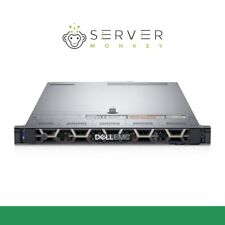
Dell PowerEdge R640 Server | 2x Gold 6132 28 Cores | H730p | Choose RAM / DRIVES
$2630.00
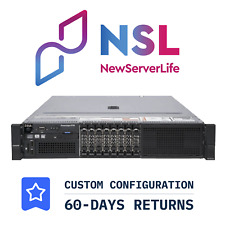
DELL PowerEdge R730 Server 2x E5-2690v3 2.6GHz =24 Cores 32GB H730 4xRJ45
$274.00
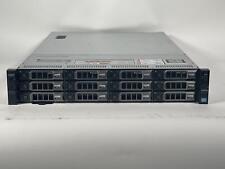
Dell PowerEdge R720XD Xeon E5-2680 V2 2.8GHz 20 Cores 256GB RAM 12x4TB
$510.00
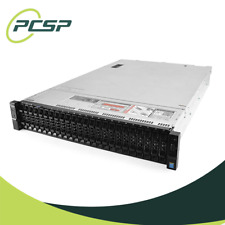
Dell PowerEdge R730XD 28 Core Server 2X Xeon E5-2680 V4 H730 128GB RAM No HDD
$389.99
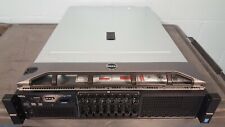
Dell PowerEdge R730, 2 sinks, SystemBoard, 8 trays,H330,Idrac 8 exp, 2x750w Psu
$135.00

Dell Poweredge R730xd 2.5in 2x E5-2690 v3 2.6ghz 24-Cores 64gb H730 2x 750w
$189.99
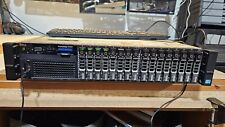
Dell PowerEdge R720 Server - 2x8c CPU,256Gb RAM, 128Gb SSD/3x600Gb SAS, Proxmox
$340.00
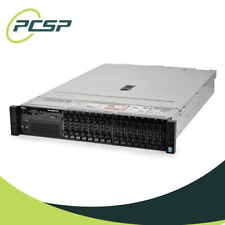
DELL PowerEdge R730 16SFF Server 2x E5-2690v4 =28 Cores No RAM/ HDD H730 4xRJ45
$232.97
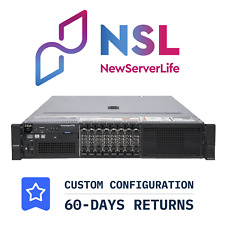
DELL PowerEdge R730 Server 2x E5-2680v4 2.4GHz =28 Cores 32GB H730 4xRJ45
$284.00
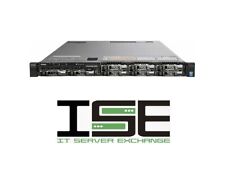
Dell R630 8 Port SFF Server 2x E5-2680v4 28C H730P 128GB 2x Trays RJ-45 ENT
$345.00
Originally Posted by garrincha



 Reply With Quote
Reply With Quote










